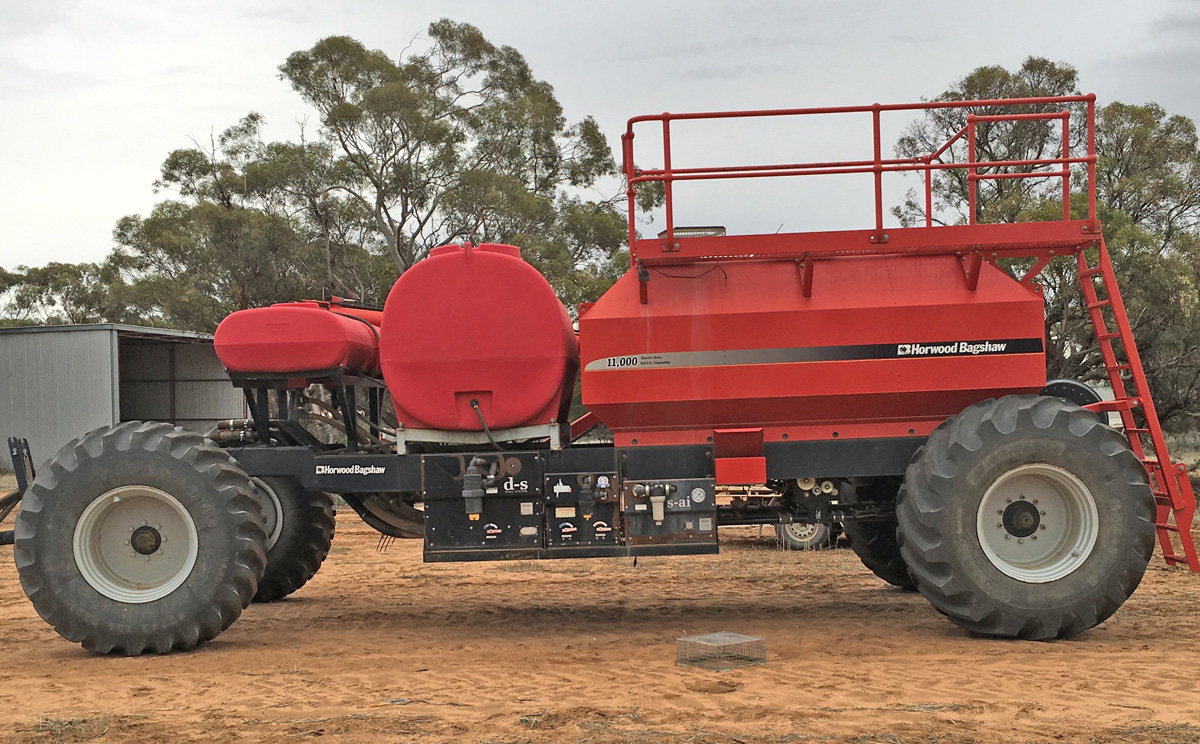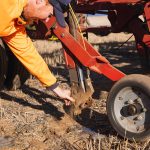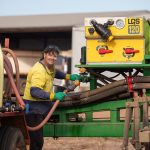Built to last year in, year out, Liquid Systems equipment delivers results.
A decade since purchasing a Liquid Systems (SA) unit, the Lindner family continues to discover new ways to improve their 2700ha cropping enterprise using liquid injection technology.
| OUTCOMES |
|---|
- 10 – 12% yield increase on non-wetting sand country
- Rust control in wheat
- Improved zinc levels
Victorian cropping farmer Scott Lindner can vouch for the durability and reliability of his Liquid Systems (SA) unit after ten years of trouble-free use.
The Lindner family, who crop 2700ha at Tutye near the SA/Vic border, purchased their system in 2007. “We haven’t had any trouble with it,” said Scott, who farms with his wife Laura. “The Liquid Systems (SA) unit is a brilliant product; I’m still really happy with it. All it has required is yearly maintenance, which is necessary for any machine on your farm.”
An early adopter of liquid injection, Scott only had to resolve an issue with the pH levels of his property’s bore water, which caused blockages in the first season. “Once we worked out what was wrong, we resolved that quickly. It was just a matter of adding phosphoric acid to the water, which we continue to do today,” he said.
Scott chose a D-S unit and Spiker Injection module from Liquid Systems (SA) and also purchased an 8-tonne truck, equipped with a 10,000L liquid tank for re-filling in the paddock. The Stacker Distribution Kit is mounted on the Lindner’s 18m Seed Hawk air drill, while the D-S unit and Spiker are mounted with three liquid tanks are all fitted to their Horwood Bagshaw air cart.These include a 4000L main tank, 500L spiker tank and a 500L flush tank for hand washing and flushing out chemicals.
For the past eight years, the Lindners have applied trace elements and fungicides to improve zinc deficiencies in their wheat, barley and lupin crops and to control rust. “I’ve had a lot less zinc deficiency showing up in my crops and we’ve had much better control of rust in our wheat,” said Scott. “We’ve seen a huge improvement there.
“I’ve got photos of strips in my paddock where I haven’t turned the Liquid Systems (SA) unit on and it’s blatantly obvious where rust is a problem.”
For the past two years, Scott has seen yield increases on his non-wetting sands thanks to spiking liquid surfactants.
Injecting surfactants has made a large difference to yield,on our non-wetting sands, where yields of 2t/ha are typical, we saw an increase of between 200kg/ha and 300kg/ha. That’s a 10 to 12% yield improvement, which is a lot on our marginal country.
said Scott. “The surfactant makes the non-wetting sands perform a lot better and improves plant germination. I can see big inroads coming from it in the future.”
The trace element mix is applied via the main Liquid Systems (SA) tank, while the surfactant is injected through the Spiker module. Last season Liquid Systems’ (SA) owner Peter Burgess set up a split flow configuration for the Lindners, which allowed Scott to apply trace elements in-furrow and surfactant on the soil surface. “I’ve got a line on the seed tine, with a jet that runs all the time and a nozzle behind the press wheel that applies the surfactant. It only turns on to apply the non-wetting agent on the sand hills,” he said. The surfactant is applied at 1L/ha, with Scott applying 1000L last year.

Above: Shows the split terminal configuration, the nozzle on the left is behind the press wheel & applies the surfactant. The other liquid line is on the front (right) seed tine.
For farmers considering a liquid injection system, Scott recommends seeking soil advice to help make the most of the Liquid Systems (SA) equipment.
When I started, the agronomic advice I received was way behind the capacity of the equipment from Liquid Systems (SA)
said Scott. “I think the agronomy is catching up now, so you can find out what works well, without doing it by trial and error.”
Get a Quote
"*" indicates required fields





